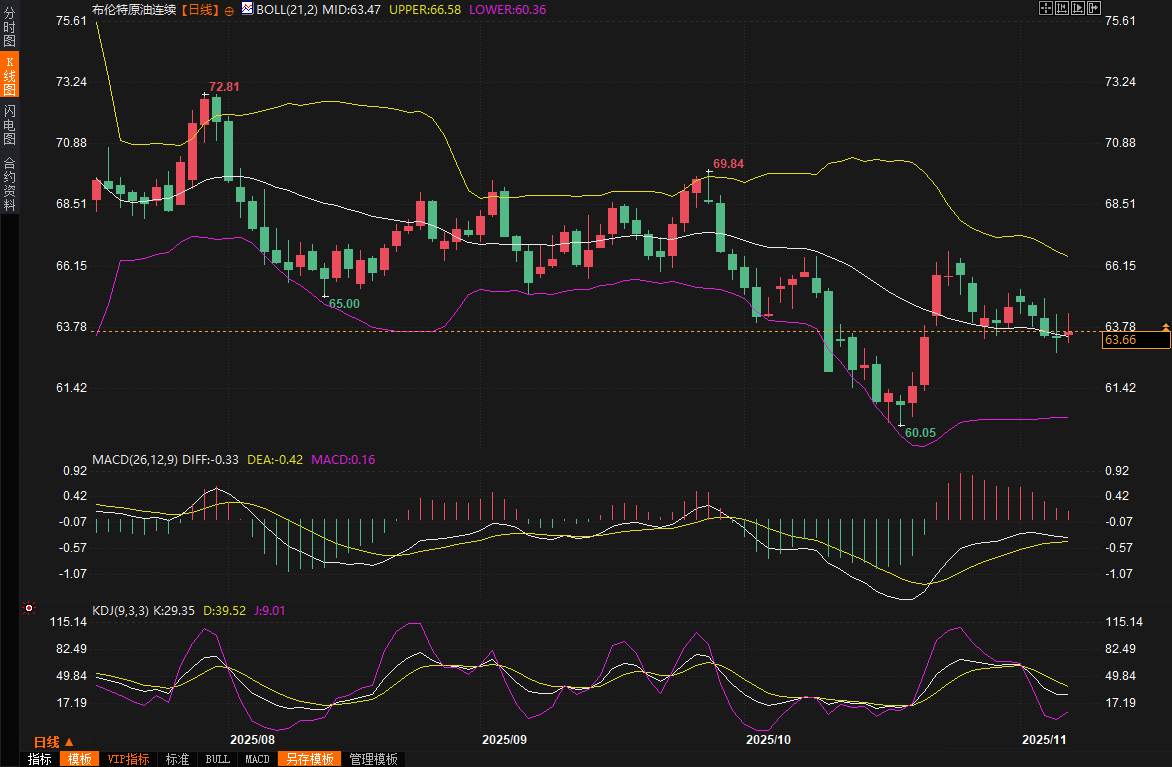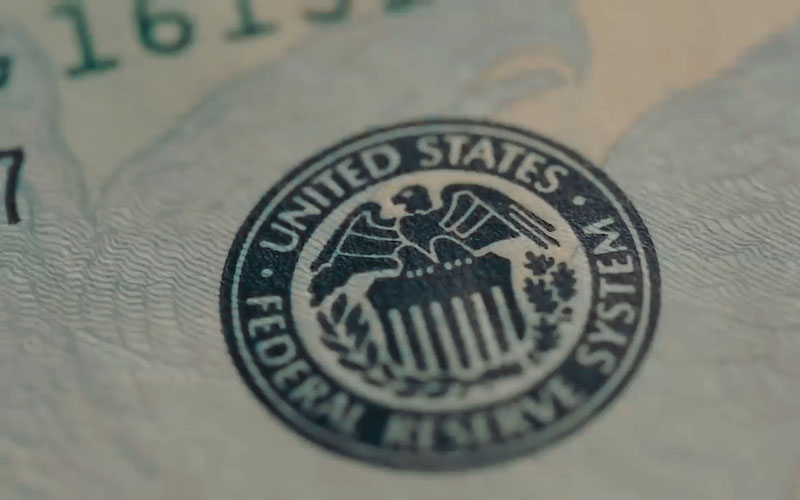Has the brakes failed in OPEC+? With oversupply looming and oil prices falling for two consecutive weeks, can the bulls turn things around?
2025-11-08 11:54:08

Opening Shock: OPEC+ Halt to Production Increases Triggers Bullish Momentum
At the start of this week, the international crude oil market received a major boost. On November 2nd, the OPEC+ alliance announced that after a slight increase of only 137,000 barrels per day in December, it would completely suspend its production increase plan in the first quarter of next year. This decision directly addressed a key market concern, quickly alleviating investors' panic about a global supply glut. In early trading on Monday (November 3rd), Brent crude futures briefly rose nearly 1% from last week, reaching a weekly high of $65.30 per barrel; WTI crude oil also rose 0.8% to $61.50 per barrel.
Warren Patterson, head of commodities research at ING, bluntly stated that this is tantamount to OPEC+'s public admission of a potential massive surplus in early 2026, especially considering the uncertainty surrounding US sanctions on Russian oil.
Helima Croft of Royal Bank of Canada further pointed out that the Ukrainian drone attack on the Russian port of Tuapse over the weekend, which caused a fire and damaged at least one oil tanker, further amplified the risk of supply disruptions in Russia. Market bullish sentiment surged, and oil prices shook off last week's gloom, seemingly poised to resume their upward trend.
However, the good times didn't last. The surge in the US dollar caused oil prices to give back their gains in late trading. On Monday (November 3), although oil prices rose slightly, they showed signs of weakness. Brent crude rose only 12 cents to $64.82 per barrel, while WTI rose 7 cents to $61.05 per barrel.
Weak Asian demand coupled with a strong US dollar
While the OPEC+ production halt offset the negative impact of a slight increase in December, persistently weak Asian factory data became the main drag. The October Asian manufacturing survey showed weak demand in major consumption centers, with Asian buyers, the world's largest oil importer, exhibiting significantly reduced purchasing power. Meanwhile, the US dollar index continued to hit three-month highs, further pushing up oil purchase costs for non-dollar buyers.
On Tuesday (November 4), oil prices fell by nearly 1%, with both WTI and Brent crude approaching two-week lows.
Morgan Stanley raised its Brent crude oil forecast for the first half of 2026 to $60 per barrel, citing the combination of OPEC+ suspending production increases and US and EU sanctions against Russia.
However, energy consultancy Ritterbusch and Associates warned that the market balance is fragile and any fluctuation in demand could reverse the upward trend.
EIA inventory levels have skyrocketed, triggering widespread panic oversupply.
The "blow" came suddenly on Wednesday (November 5). Data from the U.S. Energy Information Administration (EIA) showed that U.S. crude oil inventories surged by 5.2 million barrels to 421.2 million barrels last week, far exceeding analysts' expectations of a 603,000-barrel increase, directly igniting panic over a supply glut. Kpler analyst Matt Smith explained that a rebound in imports coupled with seasonal refinery maintenance led to the unexpected accumulation of inventories. Although gasoline inventories unexpectedly fell by 4.7 million barrels to 206 million barrels, suggesting strong fuel demand, it was insufficient to offset the pressure from crude oil prices.
Canadian Prime Minister Mark Carney's budget plan hinted at the possible removal of oil and gas emissions caps, while Russia's Tuapse refinery suspended crude oil processing and fuel exports due to a drone attack, adding further uncertainty to supply.
John Kilduff, a partner at Again Capital, lamented that the market is suffering from "the clearest anticipated oversupply in history," with oil prices plummeting from a high of $65 and short sellers launching a full-scale counterattack.
Oil prices fell more than 1% on Wednesday, hitting a near two-week low. WTI crude oil fell below the $60 mark, closing at $56.64 per barrel, while Brent crude oil touched a low of $63.41 per barrel before closing at $63.50 per barrel, a drop of approximately 1.2%.
Weak demand and geopolitical tug-of-war
Oil prices continued to fall on Thursday, but the decline narrowed towards the end of the session. Brent crude hit a low of $62.82 per barrel during the session and closed at $63.42 per barrel; WTI crude hit a low of $58.83 per barrel and closed at $59.53 per barrel.
A JPMorgan report states that global oil demand increased by only 850,000 barrels per day over the past year, below the expected 900,000 barrels per day, with high-frequency indicators in the US showing sluggish travel and transportation activity. Saudi Arabia significantly lowered its official selling prices for Asian crude oil in December to address ample market supply resulting from increased OPEC+ production. Low refinery utilization rates further exposed weak US crude oil demand, mainly attributed to the large-scale maintenance season. Although US and European sanctions against Russia have raised concerns about disruptions, demand-side pressures dominate the narrative.
Oil prices initially dipped before rebounding on Friday. The meeting between Trump and Hungarian Prime Minister Orbán was a focal point, with investors hoping that Hungary's reliance on Russian oil would ease sanctions against Lukoil and Rosneft. Gunvor withdrew its proposal to acquire Lukoil's overseas assets, and China's crude oil imports rose 2.3% month-on-month to 48.36 million tons in October, providing some demand support. However, the longest government shutdown in US history, leading to sharp reductions in flights and the suspension of labor reports, cast a lingering shadow over the economy.
Weekly close: Brent crude oil falls for two consecutive weeks, with $63 becoming a critical level.
The crude oil market trended downwards this week, with Brent crude settling at $63.63 per barrel, up 25 cents for the week but down about 2% for the week; WTI crude oil closed at $59.75 per barrel, up 32 cents for the week, but also down about 2% for the week, marking its second consecutive week of decline.
IG Markets analyst Tony Sycamore summarized that the unexpectedly high EIA inventory levels, coupled with a strong dollar and concerns about the US economic shutdown, amplified fears of oversupply. The market's October survey predicted an average Brent price of $67.99 and a WTI price of $64.83 in 2025, slightly higher than the previous month, but current prices are significantly lower than expected, highlighting market pessimism. The OPEC+ production halt, which should have been a positive factor, was diluted by multiple factors including increased non-OPEC production, geopolitical risks in Russia, and weak global demand. In the short term, the $63 mark for Brent crude will be a critical level for both bulls and bears; if it falls below this level, oil prices may accelerate their decline towards the psychological support level of $60.
Outlook: Supply constraints fail to stem demand slump, oil market enters hibernation mode?
This week, while OPEC+'s cautious pause in production increases briefly ignited a rally, it couldn't withstand the impact of the EIA inventory explosion, weak Asian demand, and uncertainty surrounding the US economy. Oil prices fell nearly 2% this week, recording two consecutive weeks of decline, with the narrative of oversupply once again dominating. Geopolitical factors such as the Russia-Ukraine conflict and the Trump-Orban meeting provided intermittent support, but weak high-frequency demand data (JPMorgan Chase lowering its forecast and Saudi Arabia cutting prices) suggests that a global consumption recovery is a long way off.
Looking ahead to next week, if the impact of the US shutdown continues to unfold, coupled with potential supply disruptions from Russia, oil prices may experience wide fluctuations. However, the fundamentals are bearish, and investors should be wary of a potential chain reaction of selling if Brent crude falls below $63. Analysts warn that the crude oil market may have entered a period of "hibernation," with bullish hopes dashed and a bearish feast possibly just beginning!

(Brent crude oil daily chart, source: EasyForex)
- Risk Warning and Disclaimer
- The market involves risk, and trading may not be suitable for all investors. This article is for reference only and does not constitute personal investment advice, nor does it take into account certain users’ specific investment objectives, financial situation, or other needs. Any investment decisions made based on this information are at your own risk.





















